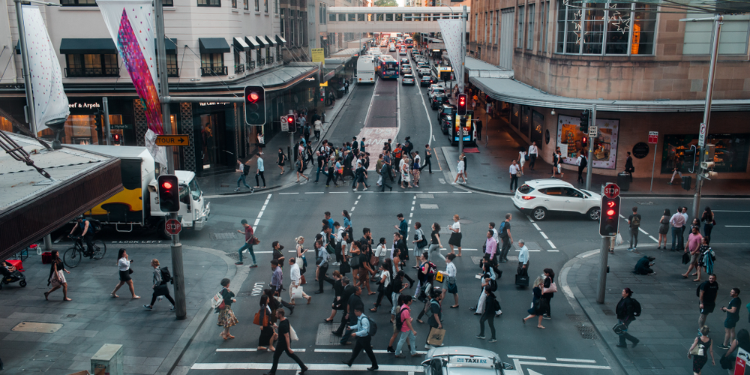
On 25 October, Australia's recently elected Labour Government announced its first budget. To solve the country's labor shortage and visa backlog, they've increased the number of permanent visas as well as the funding of the Department of Home Affairs.
Home Affairs budget increased by $576 million over 2022-2026
The Australian Department of Home Affairs is dealing with a major visa processing backlog. At the moment, there are around 870,000 visa applications still awaiting processing. Before the federal elections of May, it was even higher, almost 1 million.
Even if the Department of Home Affairs managed to process 2 million visas since June, the backlog hasn't budged by much because new applications have been flooding in since sanitary restrictions were lifted around the world. A major weakness of the Department of Home Affairs is its underfunding and understaffing. Indeed, the previous Australian government had slashed the department's funding by $845 million.
The new government is trying to reverse this. This new funding of $576 million over four years is crucial to kickstart the post-pandemic economy with new skilled immigrants and boost Australia's reputation as an attractive study destination. Australia is currently the second leading country worldwide, right after Canada, to be facing severe labor shortages. In mid-2022, there were half a million unfilled vacancies – despite unemployment being at a historic low.
As for the backlog of student visas, some are only being granted 7 or 8 months after application – enough for some international students to miss part of their first semester. Applications from some countries, notably India and Iran, are suffering more from the backlog than others. The increased funding of the Home Affairs department will add at least 500 new staff members to speed up the processing of these visas.
Permanent immigration intake rises from 160,000 to 195,000 per year
Of course, the funding is accompanied by an increase in the number of permanent visas for skilled foreign workers, who are so important to the Australian economy. The only visa caps that aren't being increased are for refugees, which has elicited criticism from humanitarian organizations.
Visas for permanent immigration have been increased by 35,000. This was announced by the government earlier in September, and it has remained unchanged in the October budget. The total of 195,000 permanent visas for 2022/2023 include 35,000 employer-sponsored visas (Subclass 186), 32,100 skilled independent visas (Subclass 189) and 34,000 regional visas for immigrants assigned to a specific territory (Subclass 491). The sectors that are most in need of skilled foreign workers are healthcare, skilled trades (e.g., electricians), tourism and hospitality, and agriculture.
Visas for the parents of permanent residents or naturalized citizens are also increasing from 4,500 to 8,500. There is no cap for family reunification visas when it comes to spouses and children. These visas will simply be granted according to demand.
New Pacific Engagement Visa to solve the agricultural labor shortage
The Pacific Engagement Visa (PEV) is a new country-specific permanent work visa that Australia will launch in mid-2023. It will welcome 3,000 workers from the Pacific islands (Samoa, Tonga, Vanuatu, Kiribati) and Timor-Leste every year. It is modeled on a similar visa that already exists in New Zealand.
The Australian agricultural sector has traditionally relied on highly mobile, seasonal Pacific workers. During the pandemic, fruits and vegetables were left to rot in the countryside while supermarket shelves in urban areas remained empty – simply because there were no Pacific workers to pick them up when borders were closed. These workers can now stay in Australia for good rather than have to keep traveling back and forth.
International students can work unlimited hours until the end of June 2023
Before January 2022, international students could only work a maximum of 40 hours per fortnight. Split evenly into two weeks, that is 20 hours per week. In January, the cap was temporarily lifted to help deal with the country's labor shortage. In the October budget, the Australian government has decided to extend this situation until 30 June 2023.
This means that for the next 8 months, as Australia has the time to bring in more economic immigrants, international students can work unlimited hours. This measure is hence a short-term solution for the labor shortage. Many students tend to work part-time in hospitality: as waiters, baristas, receptionists, etc. Hospitality is, in fact, one of the Australian sectors most in need of workers right now. Having students work in supermarkets also helps the agricultural supply chain, and agriculture is another sector critically in need of workers.
A month before the budget was announced, the Australian government had also overhauled post-study work rights. International students can now work for an additional two years in Australia after graduating. Doctoral graduates in select (i.e., in-demand) fields will now have a post-study work period of 6 rather than 4 years. Graduates from select Master's programs can stay for 5 years instead of 3, and graduates from select bachelor's degrees can stay for 4 years instead of 2. The Priority Migration Skilled Occupation List (PMSOL) identifies which fields and degrees are eligible for this.



















